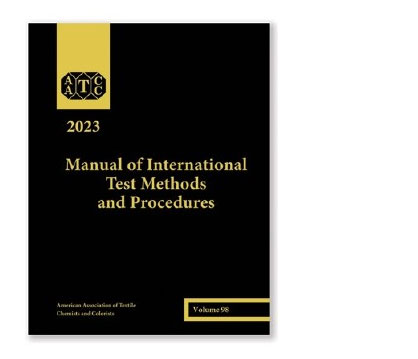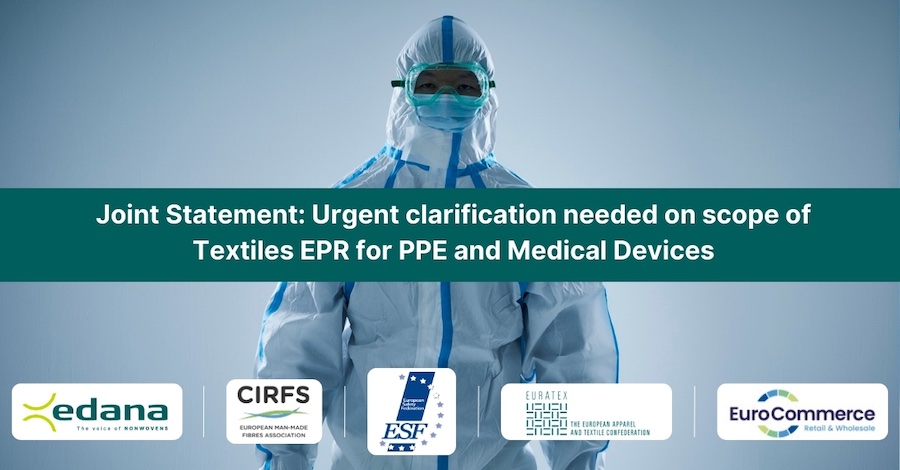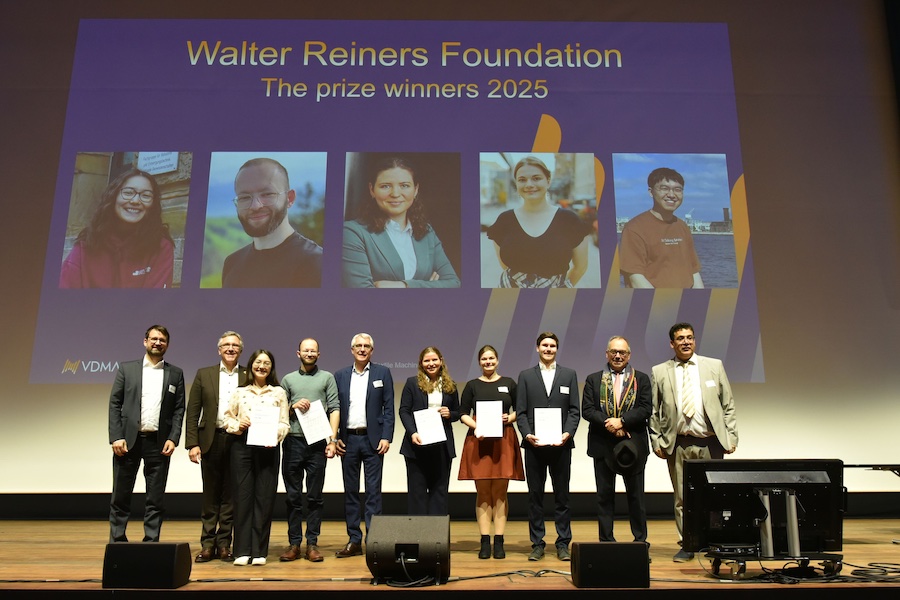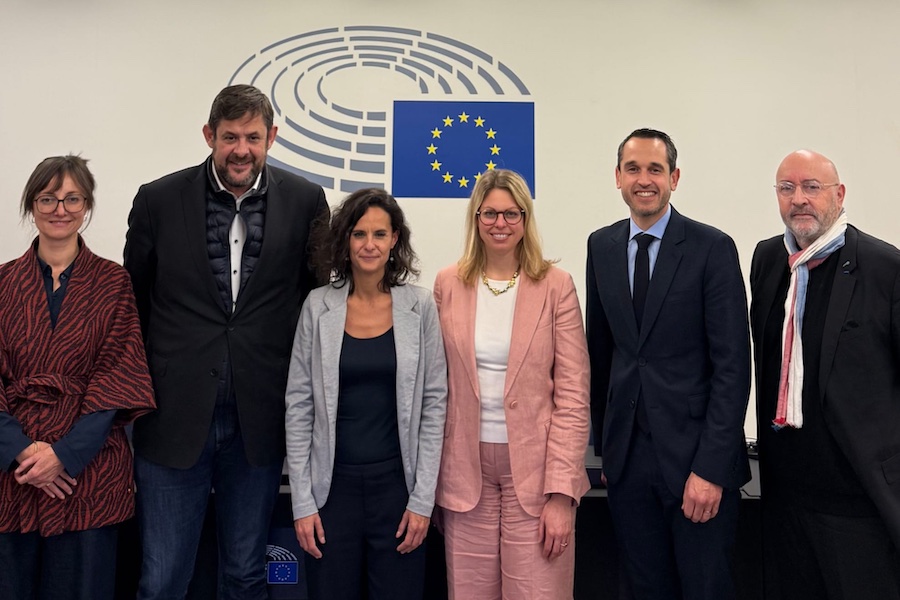#Associations
AATCC announces 2023 Manual
New & Revised Standards
There are 15 new or technically revised standards in the 2023 AATCC Manual. Several methods have been reorganized for easier use. Most notably, AATCC TM197 was separated into two methods for vertical wicking. TM197 is now specifically for evaluating wicking rate to specified distances. AATCC TM213 is a new method for evaluating wicking rate to specified times. Both methods provide guidance and troubleshooting for everything from timing multiple specimens to optimal viewing for dark specimens.
Make plans to purchase your copy in January!
Visit https://members.aatcc.org/store/ or search for individual standards at https://www.aatcc.org/testing/#tm.

AATCC TM16.1-2022, Test Method for Colorfastness to Light: Outdoor. Revised in 2022 for clarity and to add the History section.
AATCC TM16.2-2022, Test Method for Colorfastness to Light: Carbon-Arc. Revised and added History section in 2022.
AATCC TM81-2022, Test Method for pH of the Water-Extract from Wet Processed Textiles. Revised in 2022 to align to the AATCC Style Guide.
AATCC TM82-2022, Test Method for Fluidity of Dispersions of Cellulose from Bleached Cotton Cloth. Revised in 2022 to align with the AATCC Style Guide.
AATCC TM90-2022, Test Method for Antibacterial Activity of Textile Materials: Agar Plate. Revised in 2022 to clarify and align with prescribed AATCC style guidelines.
AATCC TM98-2022, Test Method for Alkali in Bleach Baths Containing Hydrogen Peroxide. Revised in 2022 to align to the AATCC Style Guide.
AATCC TM102-2022, Test Method for Determination of Hydrogen Peroxide by Potassium Permanganate Titration. Revised in 2022 to align to AATCC Style Guide.
AATCC TM107-2022, Test Method for Colorfastness to Water. Revised in 2022 for clarity and align with prescribed AATCC style guide.
AATCC TM111-2022, Test Method for Weather Resistance of Textiles: Exposure to Daylight and Weather. Revised in 2022 for clarity and to add the History section.
AATCC TM144-2022, Test Method for Alkali in Wet Processed Textiles: Total. Revised in 2022 to align to the AATCC style guide.
AATCC TM157-2022, Test Method for Colorfastness to Solvent Spotting. Revised in 2022 to provide replacement chemistries for perchloroethylene, and title change.
AATCC TM174-2022, Test Method for Antimicrobial Activity of New Carpets. Revised in 2022 to clarify and align with prescribed AATCC style guidelines.
AATCC TM186-2022, Test Method for Weather Resistance: UV Light and Moisture Exposure. Revised in 2022 to align with the style guidelines.
AATCC TM192-2022, Test Method for Weather Resistance of Textiles: Sunshine-Arc Lamp Exposure With and Without Wetting. Revised in 2022 for clarity and to add the History section.
AATCC TM197-2022, Test Method for Vertical Wicking Rate of Textiles: to Specified Distances. Revised in 2022 (with title change) to remove wicking rate to specified times (now TM213) and define other parameters. Jurisdiction transferred to RA114.
AATCC TM209-2022, Test Method for pH and Total Alkali in Wet Processed Textiles: Combined. Revised in 2022 to align to the AATCC Style Guide, and to correctly reference in Section 7.5.
AATCC TM213-2022, Test Method for Vertical Wicking Rate of Textiles: to Specified Times. Developed in 2022 (previously part of AATCC TM197), by AATCC Committee RA114.
Editorial Revisions & Reaffirmations
Additional standards were published with editorial revisions or reaffirmation.
AATCC TM8-2016e(2022)e, Test Method for Colorfastness to Crocking: Crockmeter. Reaffirmed and editorially revised to add History section in 2022.
AATCC TM15-2021e, Test Method for Colorfastness to Perspiration. Editorially revised in 2022 to correct a typo and update conditioning tolerances.
AATCC TM17-1999e2(2018)e2, Test Method for Wetting Agents, Evaluation of. Editorially revised in 2022 to note jurisdiction transfer to AATCC Committee RA114.
AATCC TM27-1952e8(2018)e2, Test Method for Wetting Agents: Evaluation of Rewetting Agents. Editorially revised in 2022 to note jurisdiction transfer to AATCC Committee RA114.
AATCC TM43-1952e6(2018)e2, Test Method for Wetting Agents for Mercerization. Editorially revised in 2022 to note jurisdiction transfer to AATCC Committee RA114.
AATCC TM66-2017e2, Test Method for Wrinkle Recovery of Woven Fabrics: Recovery Angle. Editorially revised in 2022 to add History section.
AATCC TM79-2010e2(2018)e2, Test Method for Absorbency of Textiles. Editorially revised in 2022 to note jurisdiction transfer to AATCC Committee RA114.
AATCC TM116-2018e(2022)e, Test Method for Colorfastness to Crocking: Rotary Vertical Crockmeter. Reaffirmed and editorially revised in 2022 to add the History section.
AATCC TM128-2017e2, Test Method for Wrinkle Recovery of Fabrics: Appearance. Editorially revised 2022 to add History section.
AATCC TM146-2011(2022)e, Test Method for Dispersibility of Disperse Dyes: Filter. Reaffirmed and editorially revised to add the History section.
AATCC TM183(2020)e, Test Method for Transmittance or Blocking of Erythemally Weighted Ultraviolet Radiation through Fabrics. Editorially revised in 2022 to remove the UPF compilation as it has been discontinued.
AATCC TM195-2011e2(2017)e4, Test Method for Liquid Moisture Management Properties of Textile Fabrics. Editorially revised in 2022 to note jurisdiction transfer to AATCC Committee RA114.
AATCC TM198-2011e3(2020)e, Test Method for Horizontal Wicking of Textiles. Editorially revised in 2022 to note jurisdiction transfer to AATCC Committee RA114.
AATCC TM199-2013e(2018)e2, Test Method for Drying Time of Textiles: Moisture Analyzer. Editorially revised in 2022 to note jurisdiction transfer to AATCC Committee RA114.
AATCC TM200-2017e2, Test Method for Drying Rate of Textiles at their Absorbent Capacity: Air Flow. Editorially revised in 2022 to note jurisdiction transfer to AATCC Committee RA114.
AATCC TM201-2012(2014)e3, Test Method for Drying Rate of Fabrics: Heated Plate. Editorially revised in 2022 to note jurisdiction transfer to AATCC Committee RA114.
AATCC TM204-2019e, Test Method for Water Vapor Transmission of Textiles. Editorially revised in 2022 to note jurisdiction transfer to AATCC Committee RA114.












